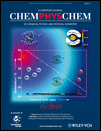Home > Press > Surfaces and Interfaces
 |
Abstract:
Innovative techniques allow researchers to study interfaces with great precision. The methods could become powerful tools in the rational design of catalytic materials
Surfaces and Interfaces
Weinheim, Germany | Posted on November 25th, 2010Equipment built by German scientists can be used to study processes at interfaces with great accuracy. In an article published recently in ChemPhysChem, Hans Joachim Freund and co-workers of the Fritz-Haber-Institut in Berlin describe the advancement of four experimental techniques developed in their lab to investigate nanoscopic systems. By combining photon scanning tunneling microscopy, aberration-corrected low-energy electron microscopy coupled to photoelectron emission microscopy, microcalorimetry, and electron-spin resonance spectroscopy, unique information on the relationship between geometric structure and properties is obtained. The methods can be applied to solve fundamental problems in surface science and to study interesting systems -particularly in the field of catalysis- which would otherwise be difficult (or impossible) to address.
"Catalysis happens at interfaces and experimental techniques are desperately needed to provide information on those systems", says Freund who is interested in understanding disperse metal and oxide catalysts at the atomic scale. According to the researcher, appropriate samples in this field are very complex so that a combination of techniques is generally required to achieve a complete picture and avoid overestimating individual results. This led him and his colleagues to design new instruments to characterize their systems.
The first method developed by the German team could overcome one of the main disadvantages of scanning probe techniques, namely, their inherent chemical insensitivity, by detecting the fluorescence signal generated by locally exciting the surface with electrons from the tip. The new technique is called photon scanning tunneling microscopy (PSTM) and has been used to study the optical characteristics of metal particles and investigate defect structures in oxide surfaces. Additionally, the researchers are working on a new aberration-corrected instrument for low-energy electron microscopy (LEEM) and photoelectron emission microscopy (PEEM), which will hopefully allow them to investigate single supported nanocatalysts. Freund and co-workers have also built a highly sensitive microcalorimeter that can be used to measure temperature-dependent heats of adsorption on nanoparticle ensembles with aggregate sizes of about a hundred atoms. The fourth technique, called electron-spin resonance (ESR) spectroscopy, can be applied to study particle ensembles and may provide interesting information that is out of reach for other methods, the authors say.
Author: Hans Joachim Freund, Fritz-Haber Institut der Max-Planck Gesellschaft, Berlin (Germany), www.fhi-berlin.mpg.de/cp/hjf.epl
Title: Innovative Measurement Techniques in Surface Science
ChemPhysChem 2011, 12, No. 1, Permalink to the article: http://dx.doi.org/10.1002/cphc.201000812
####
For more information, please click here
Copyright © ChemPhysChem
If you have a comment, please Contact us.Issuers of news releases, not 7th Wave, Inc. or Nanotechnology Now, are solely responsible for the accuracy of the content.
| Related News Press |
News and information
![]() Researchers develop molecular qubits that communicate at telecom frequencies October 3rd, 2025
Researchers develop molecular qubits that communicate at telecom frequencies October 3rd, 2025
![]() Next-generation quantum communication October 3rd, 2025
Next-generation quantum communication October 3rd, 2025
![]() "Nanoreactor" cage uses visible light for catalytic and ultra-selective cross-cycloadditions October 3rd, 2025
"Nanoreactor" cage uses visible light for catalytic and ultra-selective cross-cycloadditions October 3rd, 2025
![]() Researchers tackle the memory bottleneck stalling quantum computing October 3rd, 2025
Researchers tackle the memory bottleneck stalling quantum computing October 3rd, 2025
Chemistry
![]() "Nanoreactor" cage uses visible light for catalytic and ultra-selective cross-cycloadditions October 3rd, 2025
"Nanoreactor" cage uses visible light for catalytic and ultra-selective cross-cycloadditions October 3rd, 2025
![]() Cambridge chemists discover simple way to build bigger molecules – one carbon at a time June 6th, 2025
Cambridge chemists discover simple way to build bigger molecules – one carbon at a time June 6th, 2025
Possible Futures
![]() Spinel-type sulfide semiconductors to operate the next-generation LEDs and solar cells For solar-cell absorbers and green-LED source October 3rd, 2025
Spinel-type sulfide semiconductors to operate the next-generation LEDs and solar cells For solar-cell absorbers and green-LED source October 3rd, 2025
Academic/Education
![]() Rice University launches Rice Synthetic Biology Institute to improve lives January 12th, 2024
Rice University launches Rice Synthetic Biology Institute to improve lives January 12th, 2024
![]() Multi-institution, $4.6 million NSF grant to fund nanotechnology training September 9th, 2022
Multi-institution, $4.6 million NSF grant to fund nanotechnology training September 9th, 2022
Announcements
![]() Rice membrane extracts lithium from brines with greater speed, less waste October 3rd, 2025
Rice membrane extracts lithium from brines with greater speed, less waste October 3rd, 2025
![]() Researchers develop molecular qubits that communicate at telecom frequencies October 3rd, 2025
Researchers develop molecular qubits that communicate at telecom frequencies October 3rd, 2025
![]() Next-generation quantum communication October 3rd, 2025
Next-generation quantum communication October 3rd, 2025
![]() "Nanoreactor" cage uses visible light for catalytic and ultra-selective cross-cycloadditions October 3rd, 2025
"Nanoreactor" cage uses visible light for catalytic and ultra-selective cross-cycloadditions October 3rd, 2025
Tools
![]() Japan launches fully domestically produced quantum computer: Expo visitors to experience quantum computing firsthand August 8th, 2025
Japan launches fully domestically produced quantum computer: Expo visitors to experience quantum computing firsthand August 8th, 2025
![]() Rice researchers harness gravity to create low-cost device for rapid cell analysis February 28th, 2025
Rice researchers harness gravity to create low-cost device for rapid cell analysis February 28th, 2025
|
|
||
|
|
||
| The latest news from around the world, FREE | ||
|
|
||
|
|
||
| Premium Products | ||
|
|
||
|
Only the news you want to read!
Learn More |
||
|
|
||
|
Full-service, expert consulting
Learn More |
||
|
|
||








